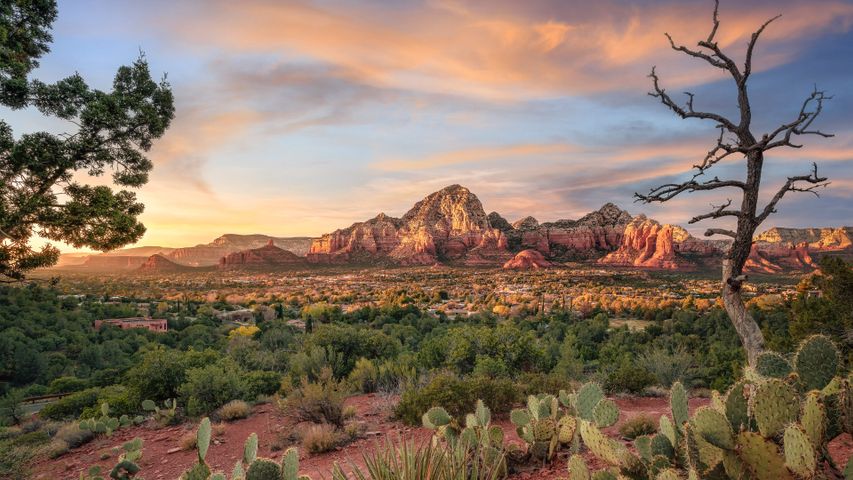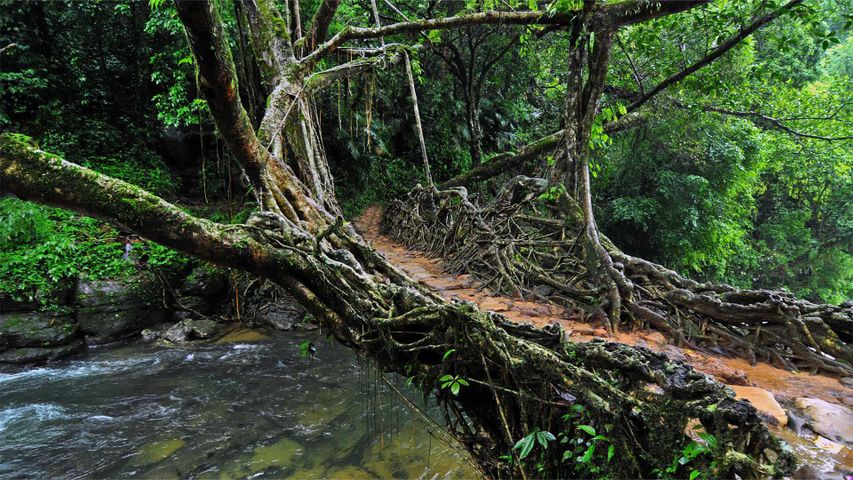Living root bridge in India
© dhritipurna/Shutterstoc
This bridge is alive. The roots of invention
Living root bridges like this can be found in the tropical rainforests of Meghalaya, a state in northeast India, which is among the wettest places on Earth. The gentle waterways that flow through the region’s valleys become gushing torrents during the summer monsoon season and will wash away traditional bamboo bridges. So, generations of indigenous Khasi people have devised a way of building root bridges by shaping living trees.It works like this: Rubber fig trees are planted or located on opposite riverbanks. As the trees' above-ground roots grow, the Khasi will guide them across the water, sometimes with the support of temporary scaffolding, like bamboo. After years of patient tending, the roots will eventually join and take hold of each other, forming a living suspension bridge that provides safe passage over the swollen rivers. The innovation has proved critical to the Khasi people. In this environment, bridges made from harvested materials would quickly rot and fall apart, leaving villages cut off and isolated.Building a living root bridge requires patience, though. It takes about 15 to 30 years to grow one sturdy enough to support humans. But investment pays off. As these bridges age, they get stronger. Some are nine metres long and can hold over 50 people.
Related Images
Bing Today Images







 Hall of Mosses trail in the Hoh Rain Forest, Olympic National Park, Washington
Hall of Mosses trail in the Hoh Rain Forest, Olympic National Park, Washington
 Synchronous fireflies, Great Smoky Mountains National Park, Tennessee, USA
Synchronous fireflies, Great Smoky Mountains National Park, Tennessee, USA